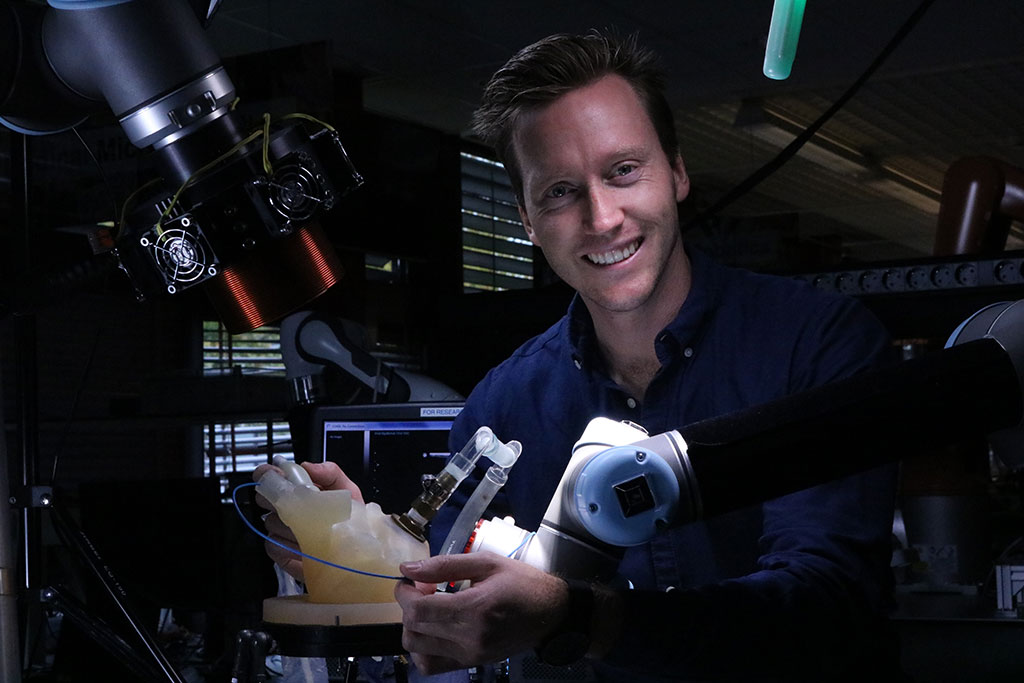Robotic Platform Precisely Steers Surgical Catheters
By HospiMedica International staff writers
Posted on 05 May 2021
A new study describes how a prototype system uses electromagnetic fields to automatically guide surgical catheters, providing a possible alternative to manual steering.Posted on 05 May 2021
The Advanced Robotics for Magnetic Manipulation (ARMM) system, developed at the University of Twente (UT; Enschede, The Netherlands), is based on a cored mobile electromagnet attached to a six degree-of-freedom (DoF) collaborative robot manipulator arm that magnetically steers a catheter with submillimeter precision. Guidance is provided via externally-generated electromagnetic fields that generate co-directional, prescribed magnetic fields and forces with independently controlled magnitudes.

Image: Christoff Heunis and the ARMM system (Photo courtesy of Christoff Heunis)
Two serial-link manipulators use an interface to communicate with their own embedded controllers in order to execute the movement of the manipulators upon receiving a pose command, expressed as a set of joint velocities. The effective workspace of the system can be approximated by a sphere with a radius of 783 mm; as the coil is positioned outside the human body, the catheter is always located between 50 mm and 200 mm away. The actuated instrument itself is a commercial coronary guide catheter that is gripped between a gear and bearing structure, with a maximum speed of 12 mm/s.
Once the user defines a catheter target at a known offset, the via-points for both the catheter and transducer are calculated from ultrasound images, with the anatomical parts of interest masked and converted to a point-cloud dataset. To sustain proper insertion control, the catheter tip is tracked via an ultrasound- based matching algorithm. In a phantom model, autonomous catheter insertion achieved a 100% success rate, with an average error between the tracked catheter tip and target positions of 2.09 mm, and a median procedure time of 32.6 seconds.
“I believe that by having an ARMM platform in every hospital, we can transform diagnostic and therapeutic catheterizations. We now just have to work towards clinical trials and advance it from this translational stage,” said ARMM developer Christoff Heunis, MSc, who developed the system as part of his PhD thesis.
A typical endovascular intervention would involve the insertion of a catheter in the groin to access the heart or important arterial branches. The catheter is, in most cases, tracked by utilizing X-ray imaging facilitated by the injection of contrast material, which discriminates the catheter from the arterial tree. Despite its convenience, X-ray imaging causes additional safety risks due to the prolonged exposure of both patients and clinicians to ionizing radiation.
Related Links:
University of Twente












.jpg)

.jpg)